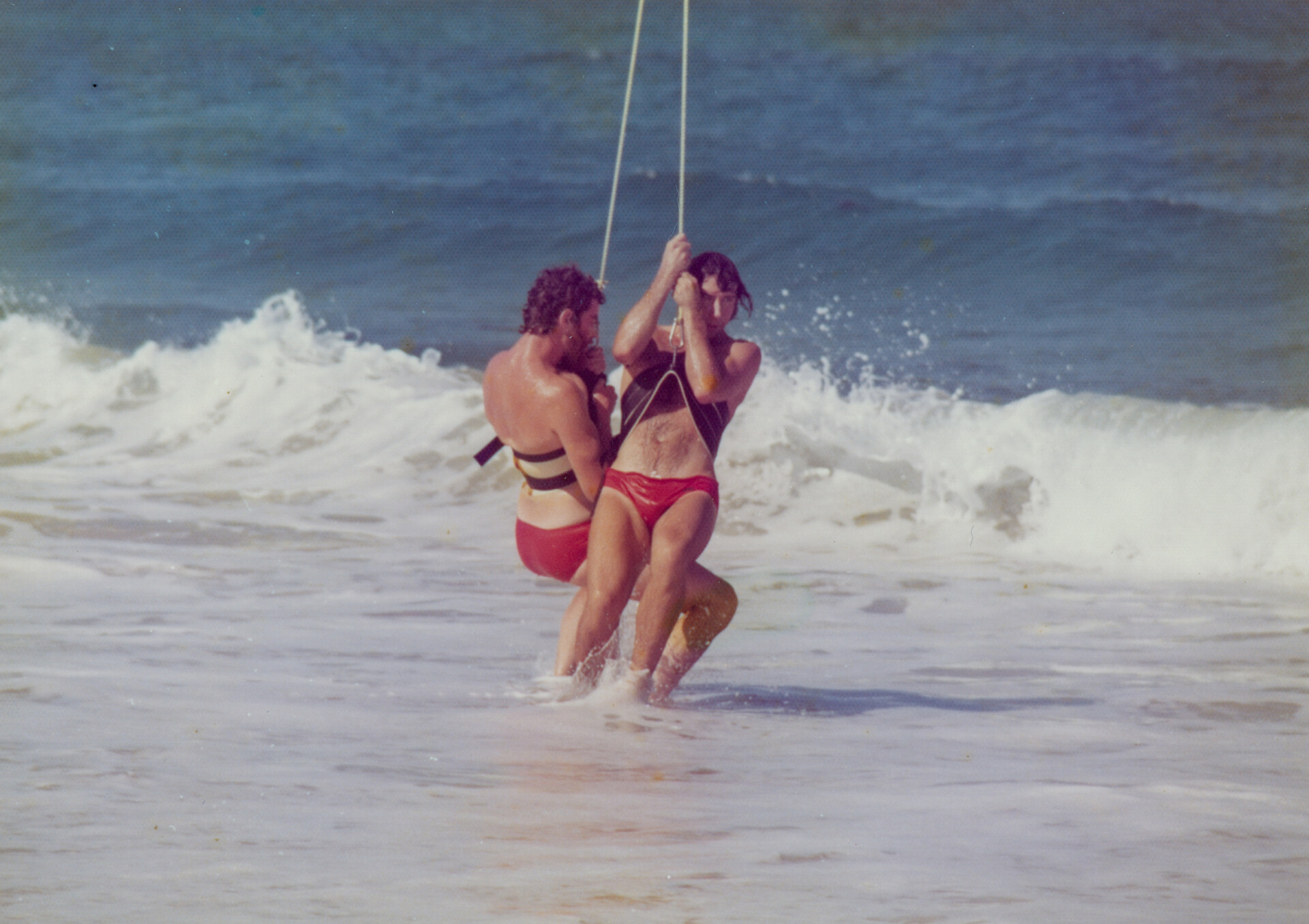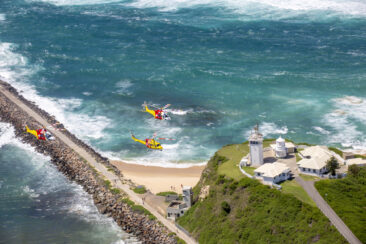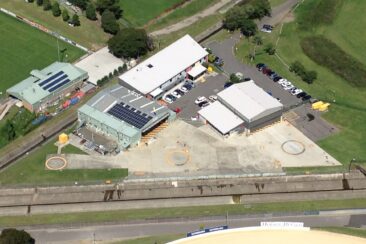In 1975, our volunteer twelve-man crew underwent an extensive program of training six months prior to commencing formal operations. The training varied from first aid and advanced resuscitation to ocean rescue techniques and radio communications. They were also required to attend a weekend-long training session at Catherine Hill Bay (photographed).
Over the years as the Service’s capability has expanded and with that, the type of initial training has developed.
Our operational crew work under extremely intense and often challenging conditions, where their experience and training are paramount to a successful mission.
Our crews winch over land and water to deliver the clinical team, the NSW Ambulance Critical Care Paramedic and NSW Health Doctor, to the patient when access is limited and to winch out of areas where access is unavailable. For an Aircrew Officer, the Winch Operator Course is a combination of 13 classroom hours and 10 flying hours.
Night Vision Goggles (NVG) training provides crews with information about head-mounted night vision enhancement devices. These devices use image intensifying technology to amplify ambient light sufficiently for images to be seen through the NVG eyepiece as a monochromatic shades of green image, effectively turning night into day. This training and technology allows the crews to fly at night.
Today, when a new Aircrew Officer joins the Westpac Rescue Helicopter Service, they are required to complete several training modules. This includes Service Training and Helicopter Underwater Escape Training as well as a Conversion course, Winch Operator, Cockpit Duties, Night Vision Operations courses and Line Training, totalling out at a minimum of sixteen flying hours, six simulator hours, 94 classroom hours and three flying missions (two primary and one secondary).
The Service’s ongoing training program enables the delivery of critical care when and where it is needed most.




